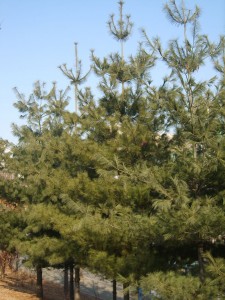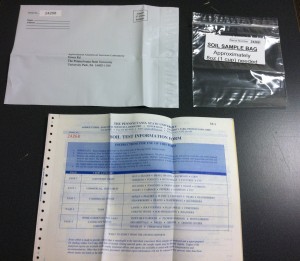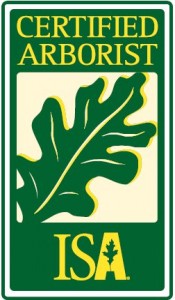How to Care for a Baby White Pine
How to Keep Pine Trees Healthy
Eastern White Pines have been widely used in landscape design for properties in Lancaster, PA and surrounding counties that we service. These pines are often selected by property owners and landscape designers that prefer the long, soft needles. This is in contrast to alternatives, such as spruce trees.The Eastern White Pine also doesn't share the same potential disease issues as some fir trees, adding another desirable feature. This relatively fast-growing evergreen tree has been widely used as a screening plant to gain privacy or to provide a windbreak for winter winds.
While a good choice for some properties, the Eastern White Pine is not without its own potential problems. Many of these issues can be addressed and even prevented by understanding its characteristics and habits.
7 Tips for Keeping Pine Trees Healthy
We often find mature pines on properties that are declining or creating maintenance issues for their property owners. If you are considering this plant for your property or have moved to a location with them present, read on! By following these tips, you will help to improve the health and appearance of your pines.

1) Select a good pine tree
Your pine trees should have one central leader that all main branches radiate from. If you purchase a plant, be careful to not choose one with co-dominant leaders. This will make your tree grow wider at its top. In addition, the place where the 2 branches meet will be a structurally weak spot, prone to splitting.
Inspect your young pine tree for wounds on its trunk and main branches. Use care when transporting it home so not to break branches.
2) Plant pine trees at the right location and in the right manner
One of the biggest mistakes we see is that Eastern White Pines get planted in the wrong places. Homeowners often plant with little understanding of just how big these trees can become.
A mature Eastern White Pine grows to a height of 50′-80′ and will grow to a width of 20′-40′. If you don't have room on your property for a tree of that size, you should be selecting a different species.
Pines are not a hedge plant. Make sure you plant them at least 20 ft. away from property lines, pavement, or utility wires since they will eventually encroach on them. Pines also drop a lot of needles in the Fall. You should take care not to plant them near areas where you don't want needles, such as patios or spouting.
Be sure to properly plant trees. Installing them incorrectly or leaving stakes and wires on trees often causes tree failure before they even reach maturity.
3) Only prune pine trees when necessary
Don't "shape" your pine trees unless advised by a Certified Arborist from a local tree service. When these trees are grown in a nursery and are young, they are often shaped in a conical shape most people are accustomed to with evergreen trees such as firs and spruces.
However, this is not the natural shape of an Eastern White Pine. Their natural shape is much more open and sprawling than tighter conifers. There may be occasions that warrant some crown thinning or crown cleaning of your pines to allow for better air movement through them, or to remove storm damage. Pines have very soft wood so they are unfortunate targets of snow, ice, or wind damage.
Eastern White Pines can also get some excessively long growth points in their mid-section, so a few selective tree pruning cuts may help to correct structural defects. Pines will only generate growth on towards the end of their branches, so aggressive pruning is inadvisable as this will cause permanent damage.
4) Maintain a buffer around the base of pines
Don't mow underneath your pine trees. When you install a young tree, extend a mulch bed around its base that gives at least 12″-18″ of mulched areas between the tree and turfgrass.
The mulch will not only help to reduce weed growth and to retain moisture for your young tree, but it will help protect the buds at the end of the branches from mower damage. Mulching can encourage a better shape for your pine. As the tree grows, expand the mulch bed out further, always keeping ahead of the growth.
5) Address issues to improve the soil under your pines
Pines can sometimes turn yellow if soil pH or certain nutrient levels lower. Although Eastern White Pines are native to our area, the areas in suburban neighborhoods aren't always ideal for their optimum health. Fertilize trees regularly and perform a soil test and correct pH and nutrients as needed every few years.
Pines will shed old needles each fall. Allow these needles to fall under your trees. Not only does it provide free mulch that will reduce weed growth, but it will help to improve the soil with compost for your trees.
6) Make sure your pine trees receive the right amount of water
Most evergreen trees won't survive in wet areas of your property so be sure to consider the lay of the land when planting pine trees. In times of drought, particularly when trees are young, water trees deeply a couple times during the week or other pest issues may be aggravated.
7) Find a tree service to treat pine trees for pests and disease
There are many pests that can cause significant health problems and even kill pine trees. These pests and fungus may cause your tree to need special care. Pests that feed on pine trees include: aphids, bagworms, mites, adelgid, weevils, scale, and bark beetles.
There are also diseases that affect not only the appearance but the overall health of pines. These diseases range from needlecast, to rust, to root rot. Most of the pest and disease issues associated with Eastern White Pines can be addressed by a Plant Health Care program.
If you live in Lancaster, Lebanon, York, or Dauphin Counties in PA and would like one of our Certified Arborists to inspect your property for any of these issues, we'd be happy to meet with you. Please don't hesitate to contact us.
Pinus Strobus by Dalgial – CC BY-SA 3.0, https://commons.wikimedia.org/w/index.php?curid=3461212
By I, IvoShandor, CC BY 2.5, https://commons.wikimedia.org/w/index.php?curid=2888813
How to Care for a Baby White Pine
Source: https://tomlinsonbomberger.com/blog/7-tips-for-healthy-pine-trees-lancaster-pa/



0 Response to "How to Care for a Baby White Pine"
Post a Comment